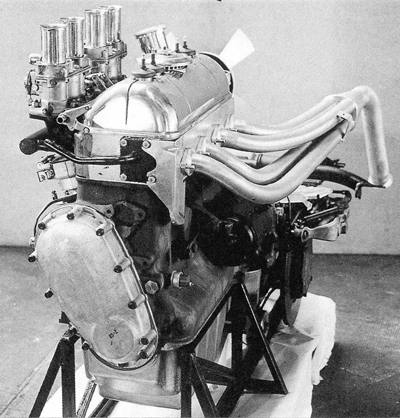|
||||||||||||||||||||||
|
||||||||||||||||||||||||||||||||
|
From its release in 1955, the DS
was criticised for inadequate power. Here was a car
with superb
handling and grip which absolutely cried out for
more performance. The DS
inherited the venerable 1,9
litre four
cylinder Sainturat engine from the 11 CV
- admittedly breathed upon to provide more power -
but even the most
hardened worshipper of the Goddess would admit that
the engine was low
on power and refinement. A number of companies
extracted more power from
the 1911cc unit including Connaught
in the
United Kingdom who supplied a twin carb conversion. Having dropped the horizontally opposed engine project, six avenues were explored -
Capacity was increased from 1.911 cc to 1.987 cc, the cylinder head was redesigned to accommodate two overhead camshafts and 16 valves - this in 1963! The crankshaft acquired 5 bearings and power output was in excess of 125 bhp. An otherwise standard DS fitted with this engine was good for 180 kph at a time when the production car could achieve 150. |
||||||||||||||||||||||||||||||||
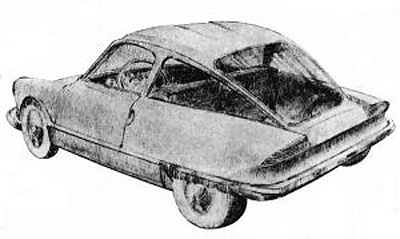 |
A number of design studies for a two door high performance coupé were undertaken throughout the fifties and sixties - those one on the left and below are by Bertoni (note the reverse slope rear window which saw the light of day in the Ami 6). The early nineteen sixties saw many different proposals, both mechanical and styling, being examined. By the mid sixties Projet S was effectively redefined. Although very good performance had been extracted from Citroën's venerable four cylinder, it was felt that the new car should employ a six cylinder powerplant and rather than a lightweight, DS derived body, Robert Opron was given the brief for a longer, heavier car than the DS. Thanks to the French fiscal system, cars with engine capacities in excess of 2,8 litres were heavily penalised. Largely for financial reasons, the design of a lightweight, powerful engine with relatively small displacement was not within Citroën's capabilities. Fortunately, the solution was found when Citroën signed the PARDEVI accord whereby Fiat took over Michelin's 49% stake in Citroën and acquired Maserati from Orsi on 25 October 1968. |
|||||||||||||||||||||||||||||||
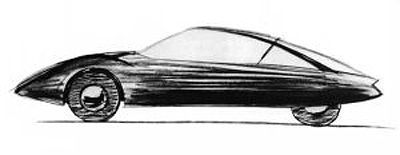 |
||||||||||||||||||||||||||||||||
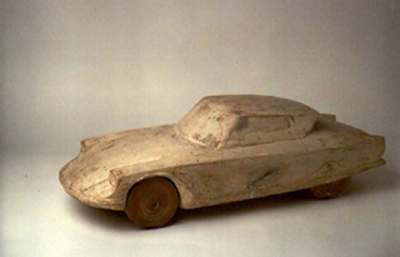 |
 |
|||||||||||||||||||||||||||||||
 |
 |
|||||||||||||||||||||||||||||||
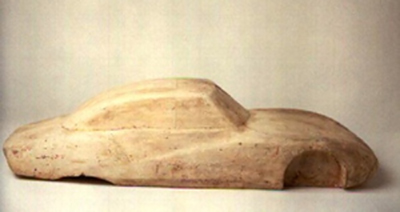 |
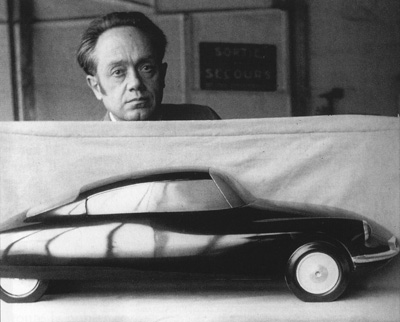 |
|||||||||||||||||||||||||||||||
| Right Bertoni pictured with a scale model of Véhicule S | ||||||||||||||||||||||||||||||||
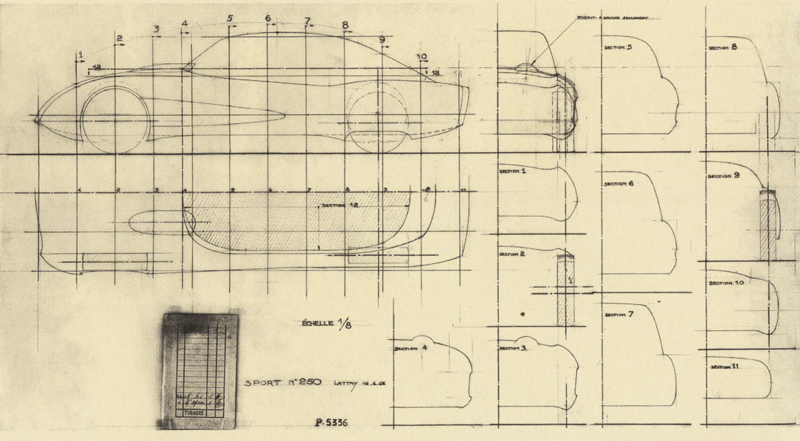 |
||||||||||||||||||||||||||||||||
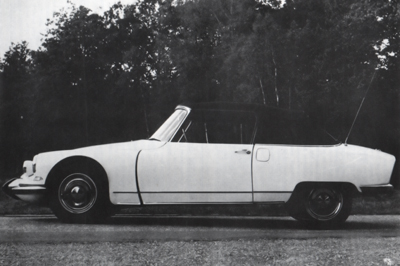 |
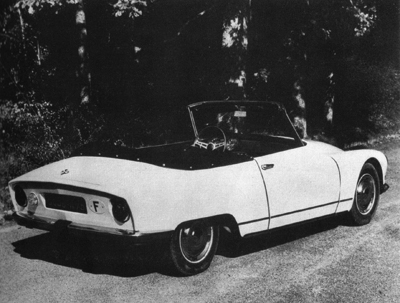 |
|||||||||||||||||||||||||||||||
|
A number of prototype vehicles were built, most of them retaining some elements of the DS's styling including this vehicle from 1964 - a shortened, two door coupe some 7 cm lower and than the saloon but retaining the frontal styling. This model was known as the "S" or DS Sport... |
||||||||||||||||||||||||||||||||
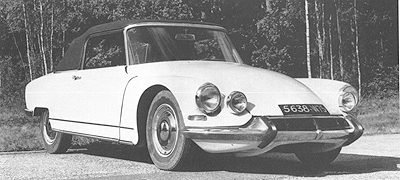 |
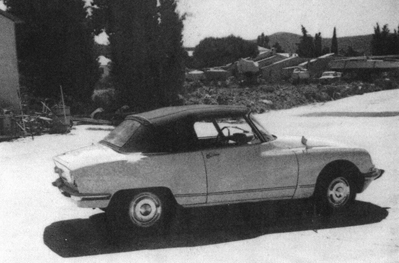 |
|||||||||||||||||||||||||||||||
|
Right - the same car fitted with the post 1968 front end |
||||||||||||||||||||||||||||||||
|
||||||||||||||||||||||||||||||||
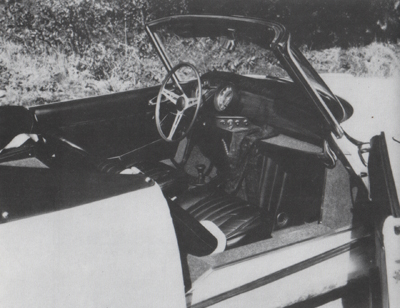 |
 |
|||||||||||||||||||||||||||||||
|
Above
the 1964 D Sport alongside the regular
DS Berline |
||||||||||||||||||||||||||||||||
|
Other prototypes were further removed from the production DS, one built in 1965 being equipped with headlamps mounted in front of the radiator and operating through an opening in the bonnet as shown in the picture on the right which shows the system fitted to an otherwise standard ID 19. |
 |
|||||||||||||||||||||||||||||||
|
||||||||||||||||||||||||||||||||
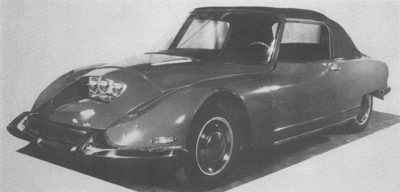 |
||||||||||||||||||||||||||||||||
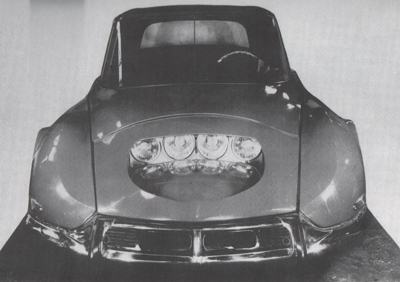 |
For daytime use, the lights were concealed behind a perspex panel that preserved the line of the bonnet and which would be lowered (hydraulically) when the lights were switched on. The angle of the perspex panel meant that refraction would have rendered the lights ineffective, although for daytime use during flashing of the lights when a properly directed beam was not essential, the panel stayed in place. |
|||||||||||||||||||||||||||||||
|
This car's bonnet and front wings, together with the windscreen were forward hinged at a point just forward of the radiator making access to the lights and rear spark plug very easy indeed although it is likely that it would have been very heavy since it incorporated the windscreen and lights.. The car was equipped with DIRAVI or Varipower steering. The spare wheel was mounted at the rear. As all D owners are aware, access to the rear spark plug is somewhat restricted and headlamp adjustment on the post 1967 models is similarly difficult. |
||||||||||||||||||||||||||||||||
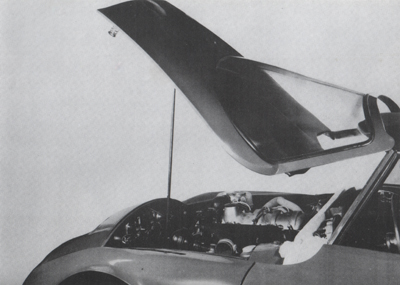 |
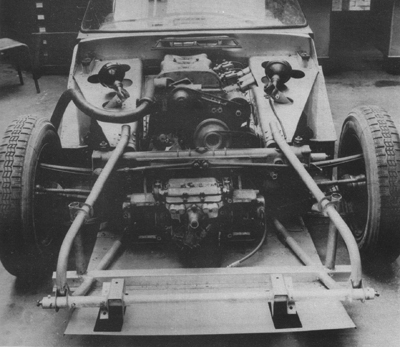 |
|||||||||||||||||||||||||||||||
|
Throughout the sixties, the imminent launch of the
Sports DS
was rumoured but sadly the car never saw the light of
day. Desiring to break the 200 kph limit, research was undertaken in 1966 to create a Sports version of the DS powered by a twin carburettor engine of 2 175 cc capacity developing 125 bhp. This car employed a shortened, coupé version of the DS body similar to those developed by Ricou and others. |
||||||||||||||||||||||||||||||||
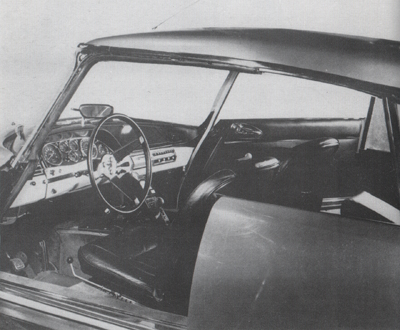 |
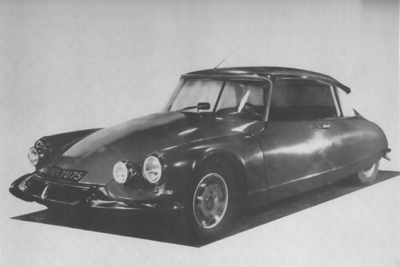 |
|||||||||||||||||||||||||||||||
|
||||||||||||||||||||||||||||||||
| © Julian Marsh 1996 | ||||||||||||||||||||||||||||||||



